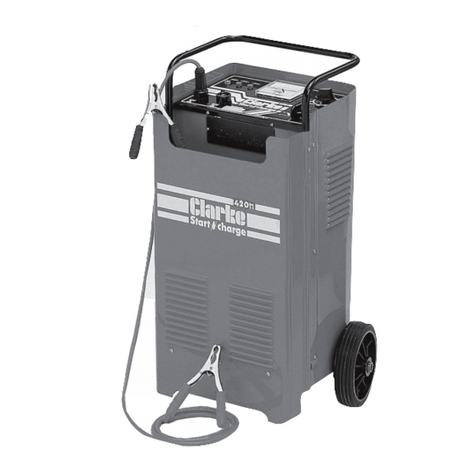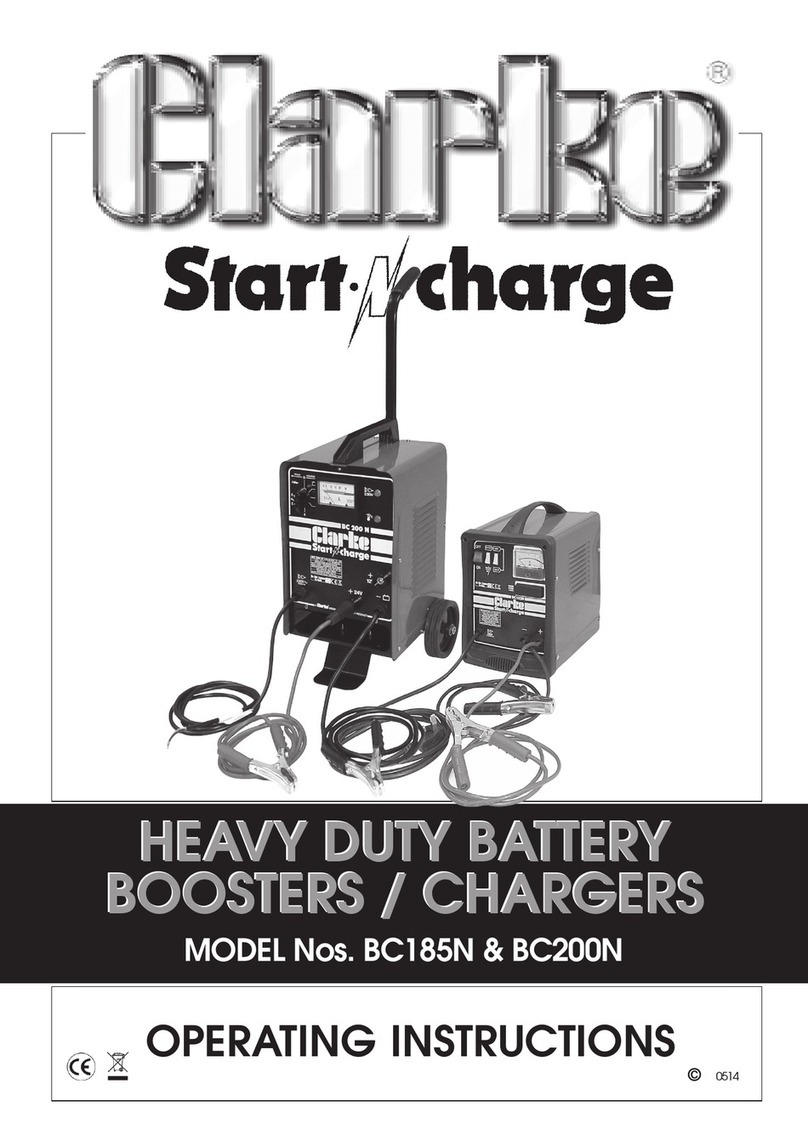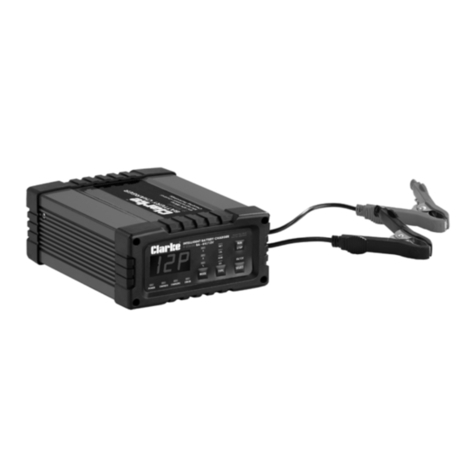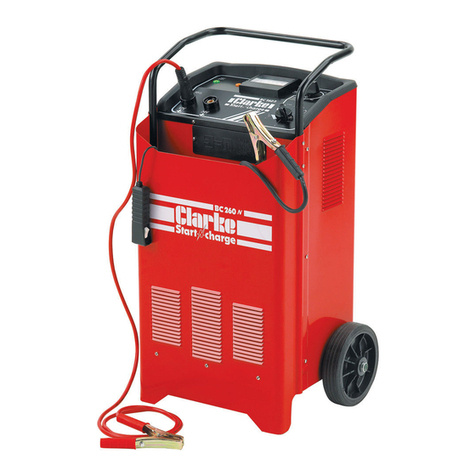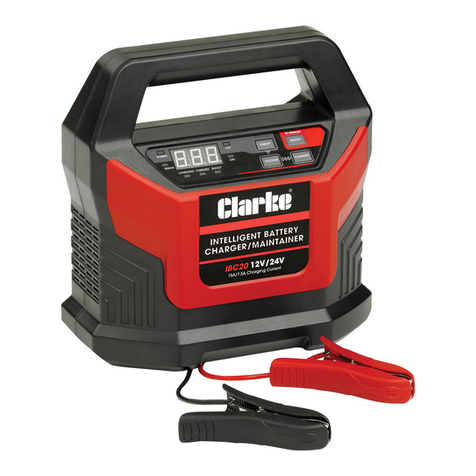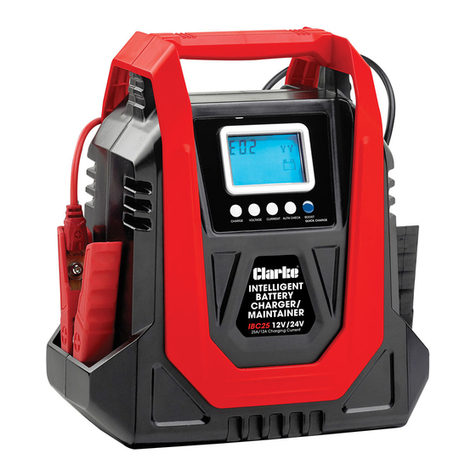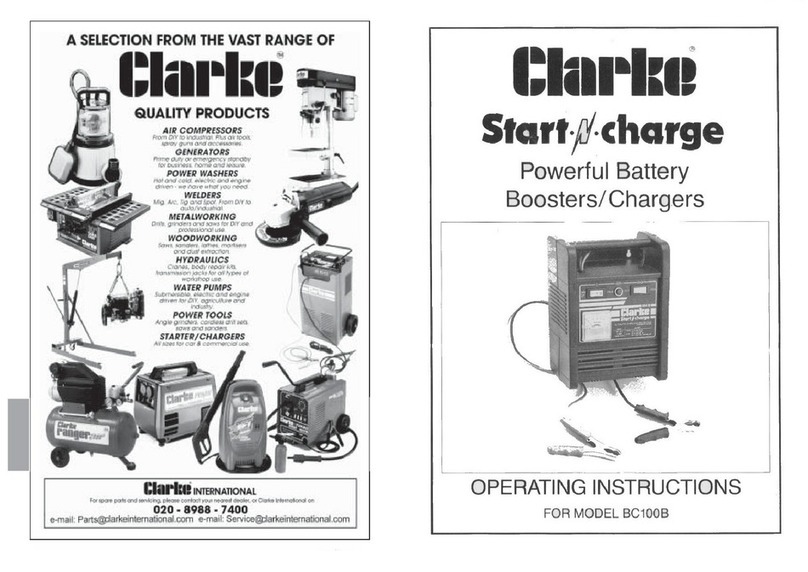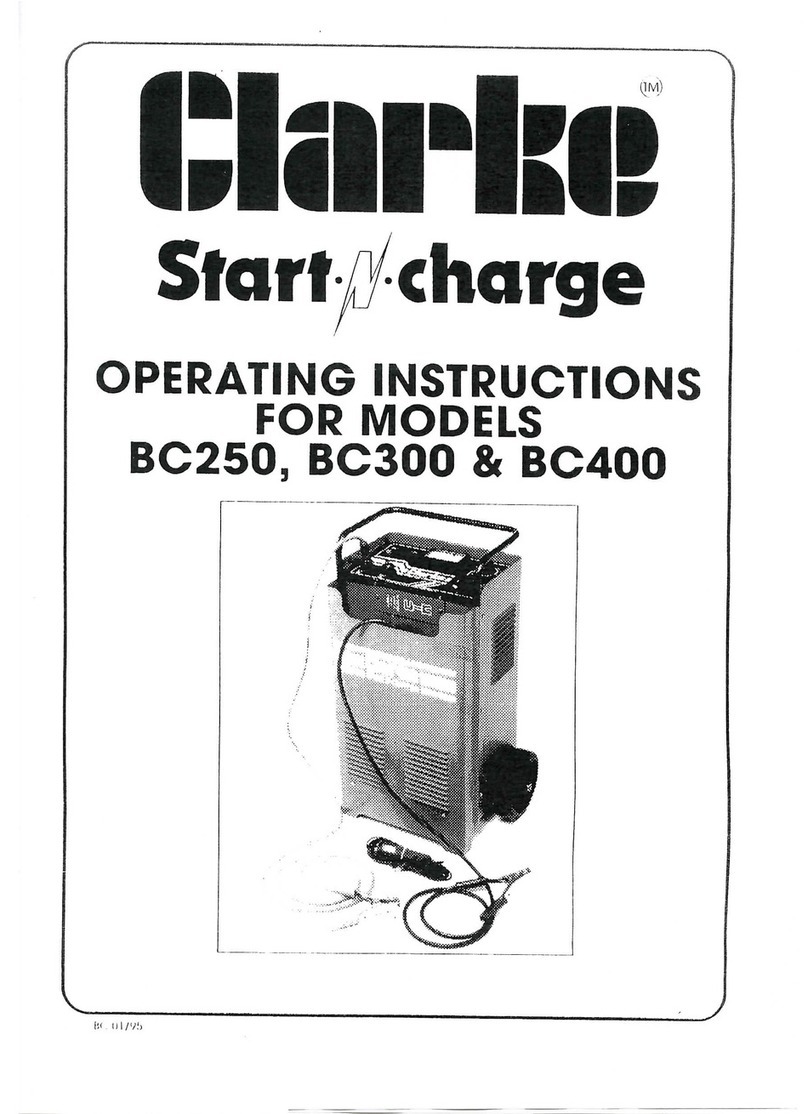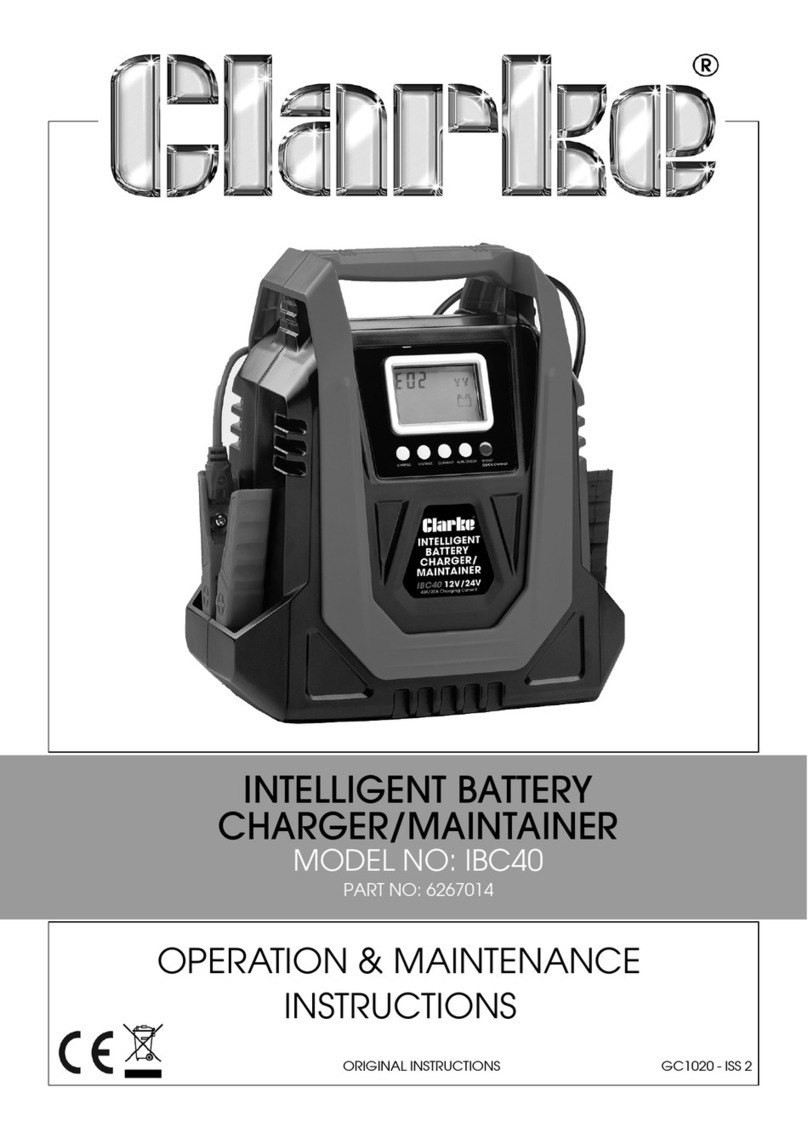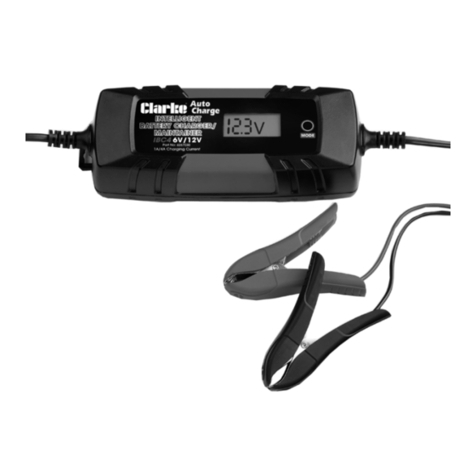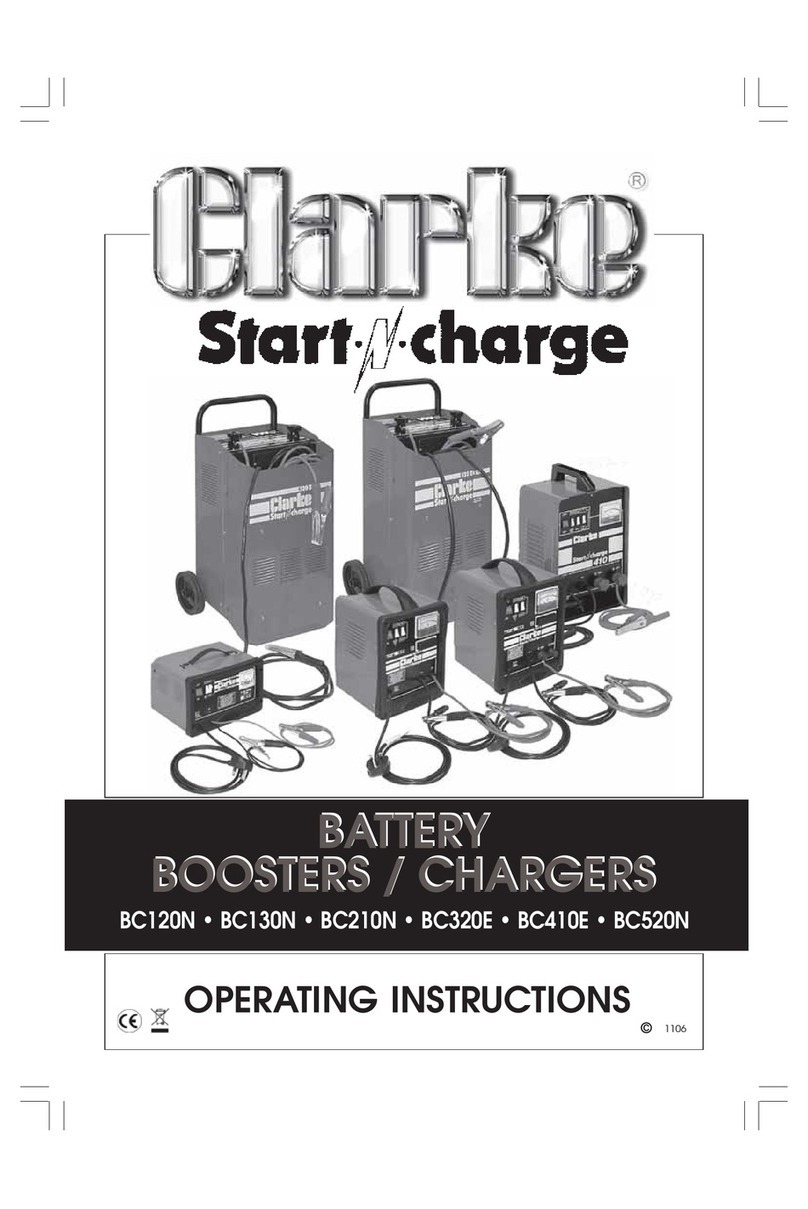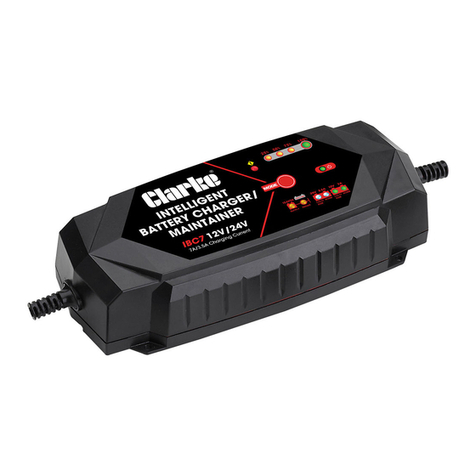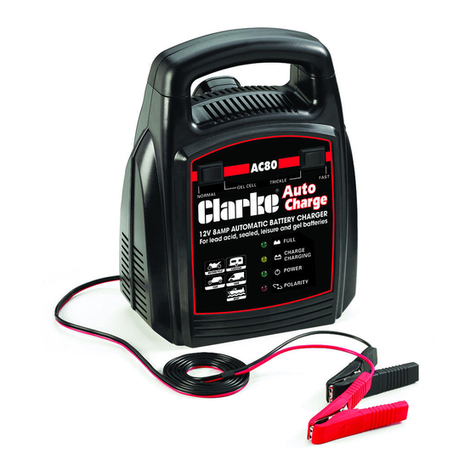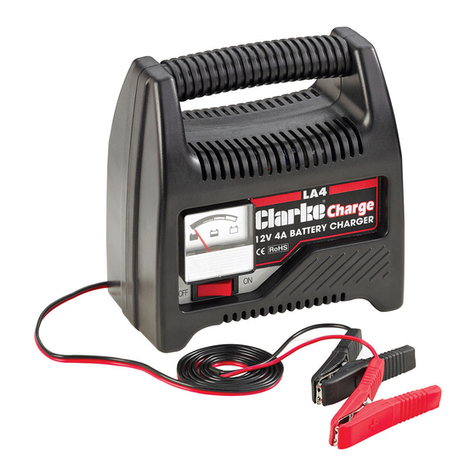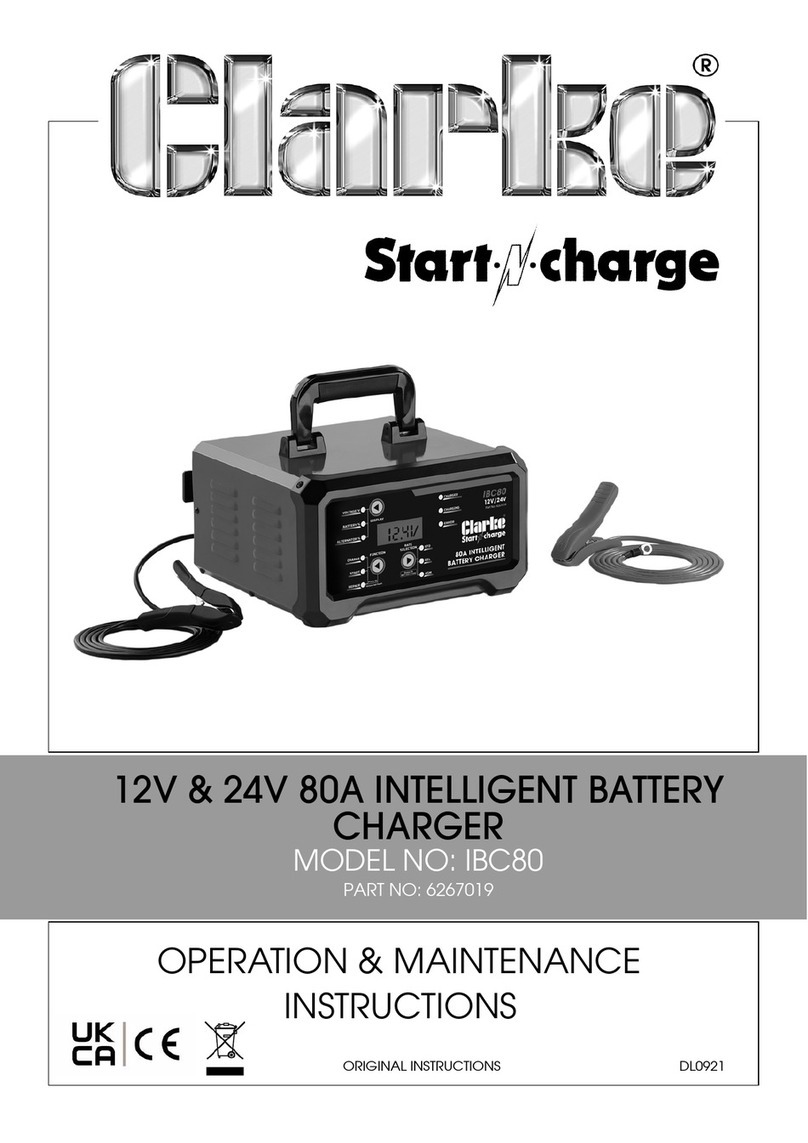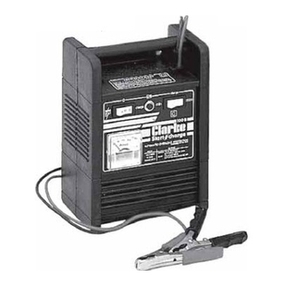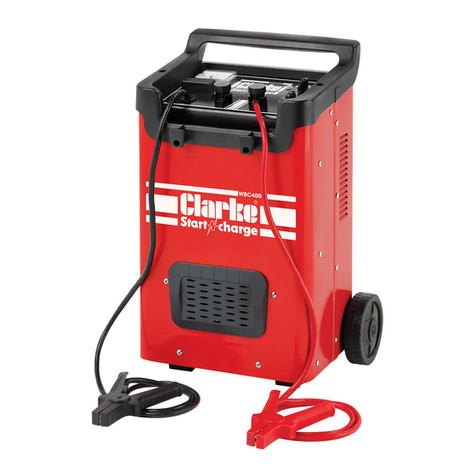99
99
9
PROCEDURE FOR ENGINE STARTING
BC150 & BC170 (Re: Fig.1)
Note: We recommend that before attempting to boost start you charge the battery for 10-15
minutes. This will improve the chance of a first time start, particularly with big engines. When
the battery is completely flat, you must charge the battery for 10-15 minutes before
attempting to start, otherwise you may cause damage to the vehicle electronic systems.
a) Check that the ON/OFF switch (4) is in the OFF position.
b) Connect the cables as for normal charging.
c) Check that the CHARGE/BOOST START switch (2) is in the BOOST position.
d) Switch the ON/OFF, switch to the ON position.
e) Turn the key in the vehicles ignition to ‘start’, and get an assistant to switch the
CHARGE/ BOOST START switch (2) to CHARGE position IMMEDIATELYthe engine starts,
or after a maximum of 5 seconds (BC150) or 10 seconds (BC170), if the engine fails
to start. Failure to do this may cause damage to some electronic equipment.
IMPORTANT: You must return the CHARGE/BOOST START switch to CHARGE position
after a maximum of 5 seconds - 150 or 10 seconds - 170, on boost start. Wait 20
seconds - 150 or 60 seconds - 170, before repeating. Failure to do this may damage
the battery and the Start ‘N’ Charge unit and may invalidate your guarantee.
BCI8O and BC200B (Re: Fig.2)
Note: We recommend that before attempting to boost start, you charge the battery for 10 to 15
minutes. This will improve the chance of a first time start, particularly with bigger engines. When the
battery is completely flat, you must charge the battery for 10-15 minutes before attempting to start,
otherwise you may cause damage to the vehicle electronic systems.
a) Check that the mains supply is OFF and that the amperage controller knob (1) is in
the OFF position.
b) Connect the cables as for normal charging.
c) Switch ON the mains supply.
d) Turnthekeyinthevehiclesignition to ‘start’, and get an assistant to hold the amperage
control knob (1) in the BOOST START position.
Release the amperage control knob so that it reverts to the OFF position immediately
the engine starts, or after a maximum of 10 seconds if the engine fails to start. Failure
to do this may cause damage to some electronic equipment. If in doubt consult
vehicle handbook or manufacturer.
IMPORTANT: You must return the amperage control switch to the OFF position after a
maximumof10secondsonbooststart,thenwaitatleast 30 seconds before repeating.
Failure to do this may damage the battery AND the Start ‘N’ Charge unit and may
invalidate your guarantee.
NOTE: If the Start and Charge unit is overloaded at any time, a thermal cut out will
automaticallycomeintooperation,rendering it inoperative. TheBC180B&200Bareequipped
with a thermal overload indicator (4) which will illuminate. Allow approximately 5-10 minutes,
or wait for the indicator light to go out before using the unit again.
MODEL 150 170 180B 200B
MAX CHARGE (AMPS) 15 20 20 30
MAX BOOST (AMPS) 140 160 180 200
BOOST/CHARGE (VOLTS) 12 12 12/24 12/24
BOOST START DUTY CYCLE Max 5 secs ON Max 10 secs ONMax 10 secs ON Max 10 secs ON
20 secs OFF 60 secs OFF 30 secs OFF 30 secs OFF
THERMAL OVERLOAD YES YES YES YES
PROTECTION
DIMENSIONS 260X260X250 260X260X210 260X300X770 260X300X770
(LxWxH) mm.
WEIGHT kg. 10 12.5 16 21
PART NO. 6210185 6210190 6210180 6220000
This battery charger is designed to charge either 12V or 24V lead-acid automotive batteries.
Do not attempt to recharge any other type of battery. Do not use the battery charger as a
power source.
SPECIFICATIONS
REPLACEMENT FUSES
MODEL PART No.. AMPS QTY REQUIRED
BC150 EM22220031 75 1
BC170 EM22220029 120 1
BC180B EM22220029 120 1
BC200B EM22220030 100 2
PARTS & SERVICE CONTACTS
For Spare Parts and Service, please contact your nearest dealer,
or CLARKE International, n one of the following numbers.
PARTS & SERVICE TEL: 020 8988 7400
PARTS & SERVICE FAX: 020 8558 3622
or e-mail as follows:
1010
1010
10
